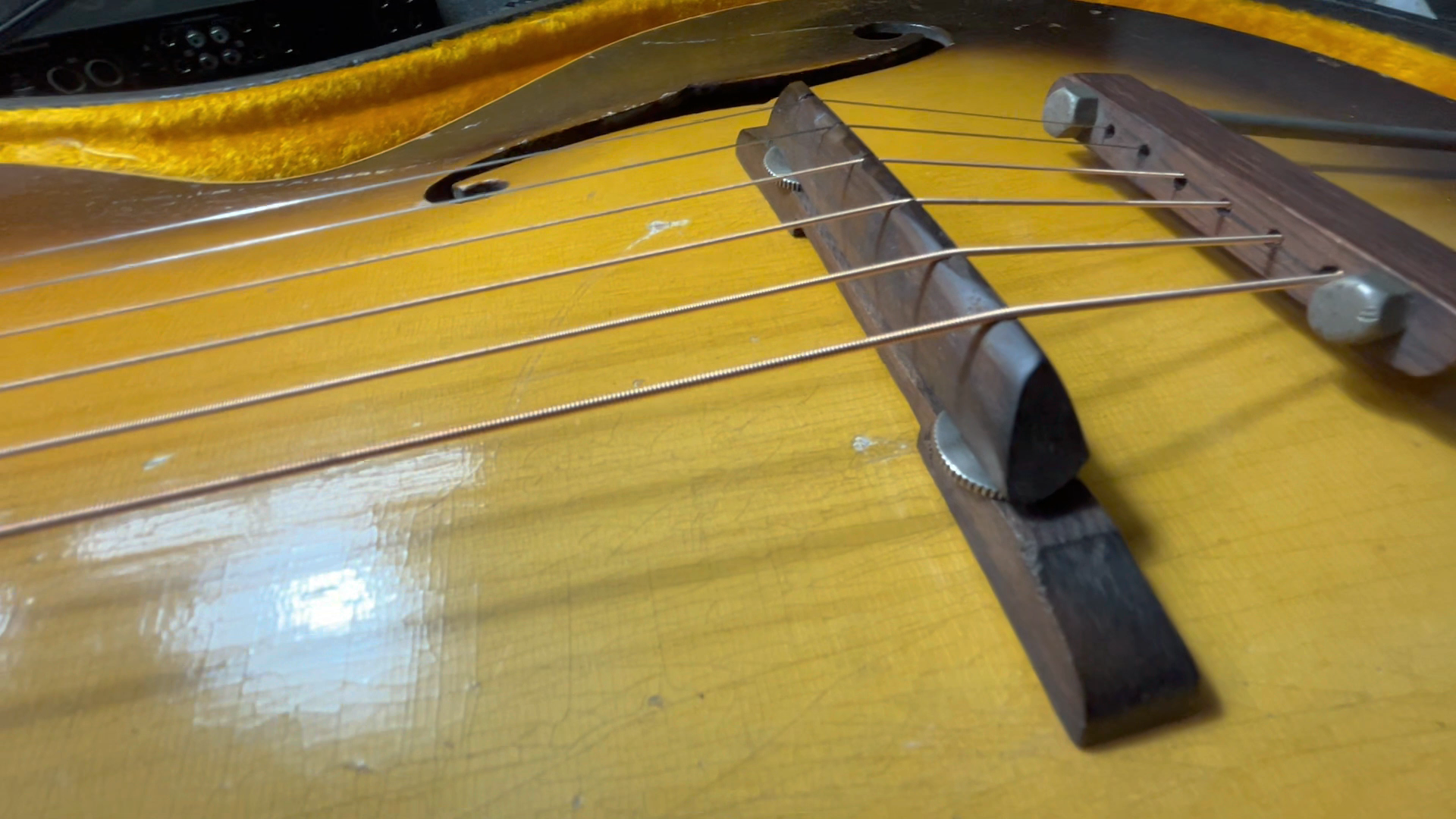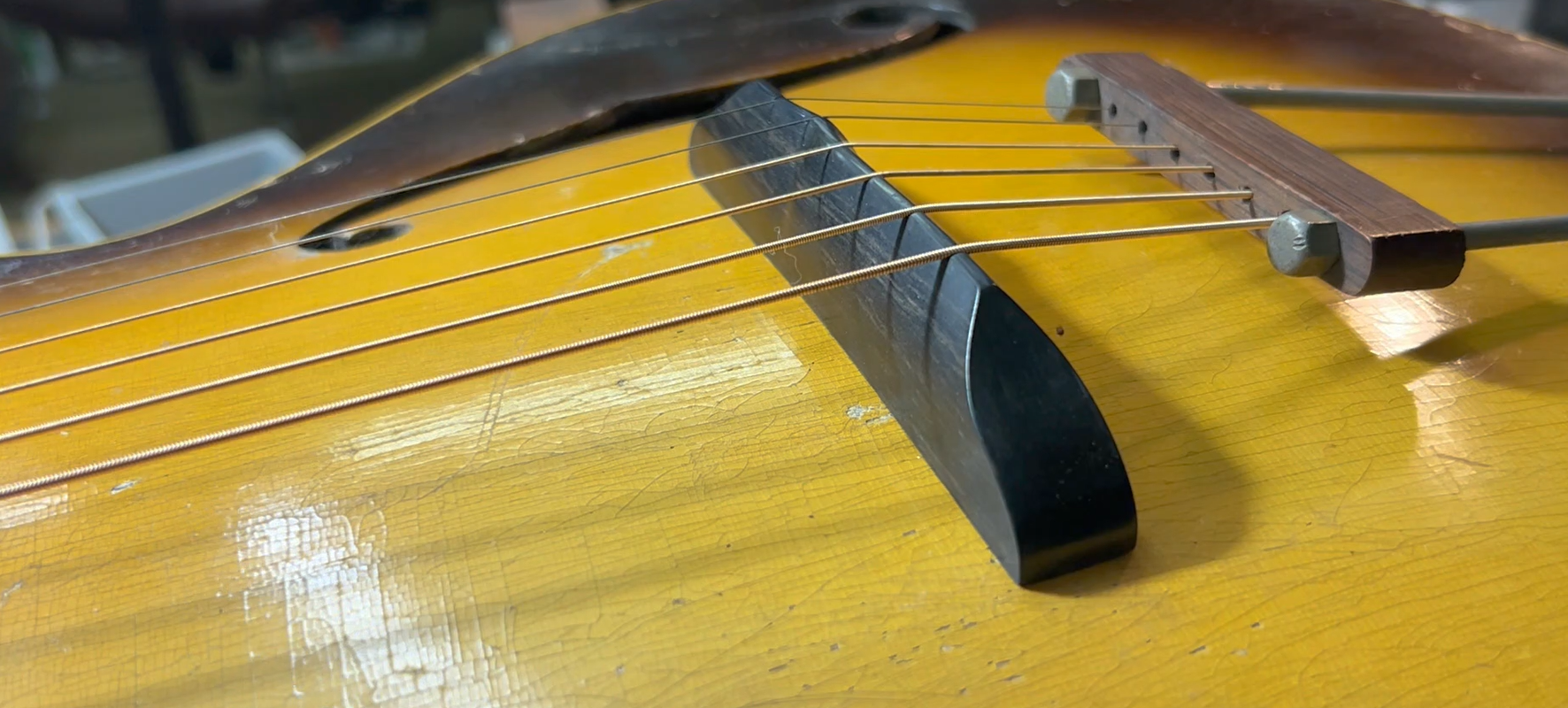X-Brace Conversion
Converting a ladder-braced guitar to an X-braced design involves reshaping the internal structure that supports the guitar's top (soundboard). In a ladder-braced guitar, the braces (strips of wood that reinforce the top) run parallel to each other in a ladder-like pattern, providing sturdy but less responsive support. Switching to an X-braced configuration entails removing the existing braces and replacing them with two main braces that intersect in an 'X' shape near the soundhole. This X-bracing pattern allows for better distribution of vibrations across the soundboard, enhancing resonance and volume. It's a more complex process than it sounds, as it requires careful consideration of the guitar's construction and acoustic properties to achieve the desired tonal improvements.
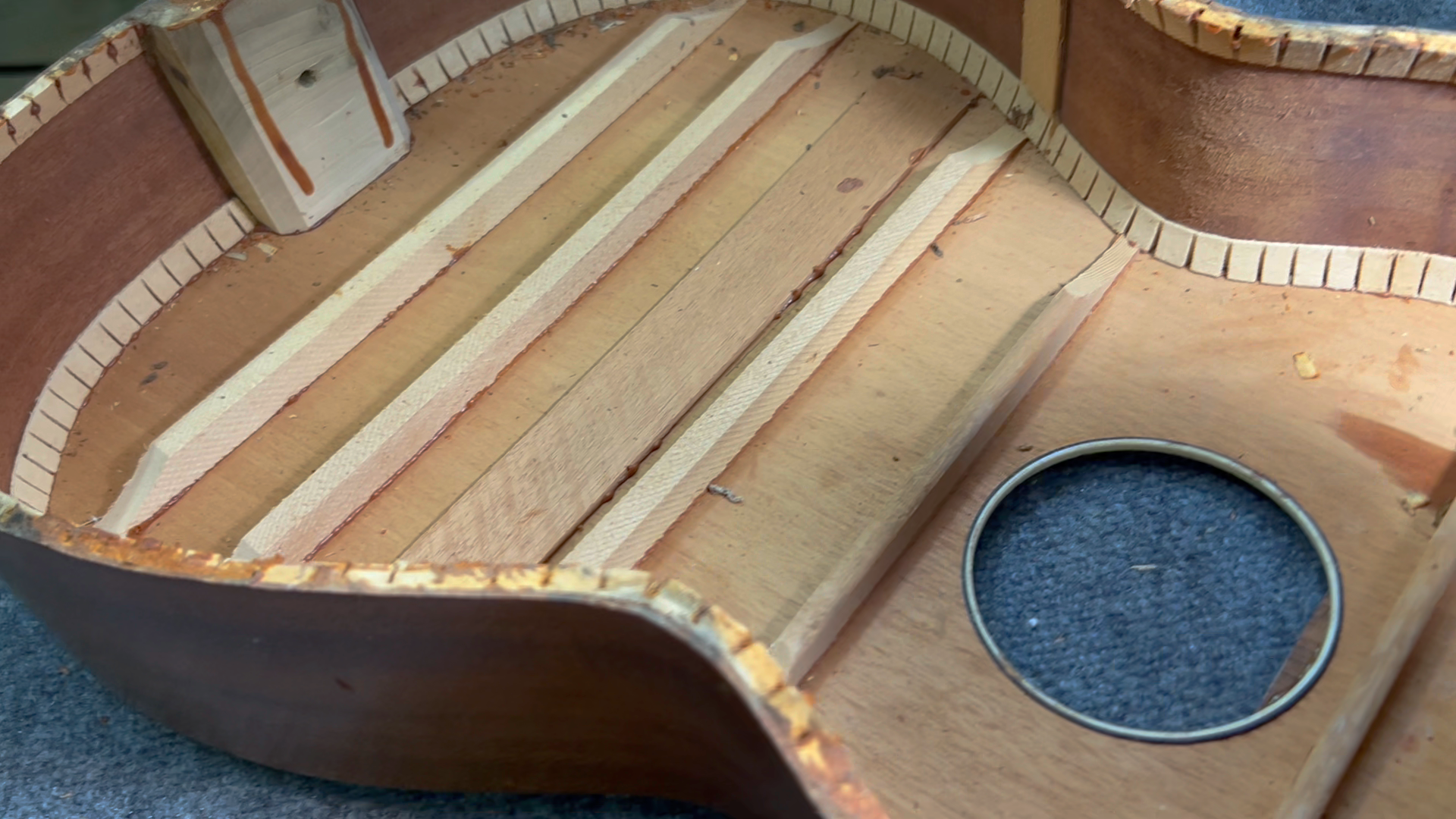
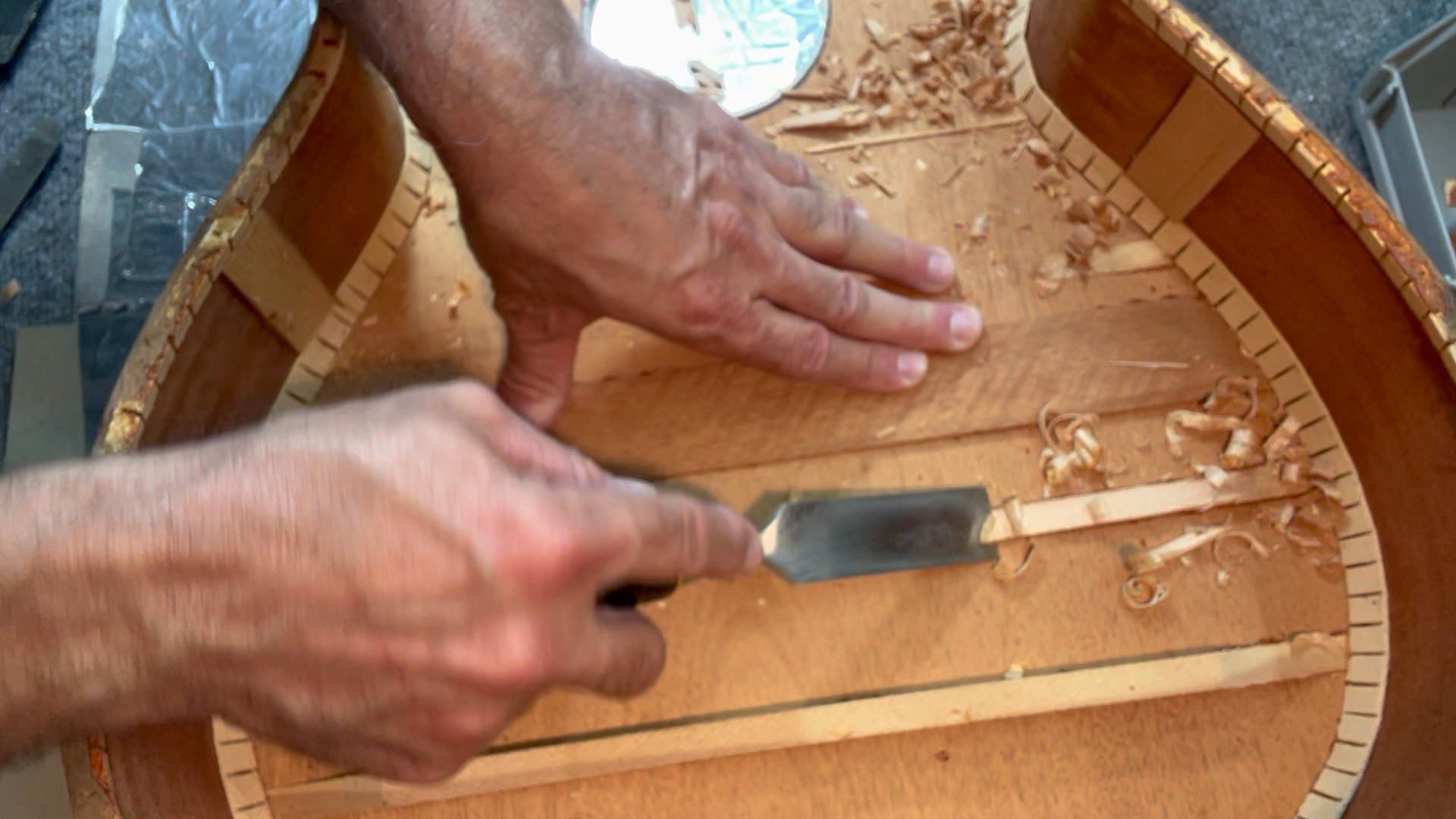
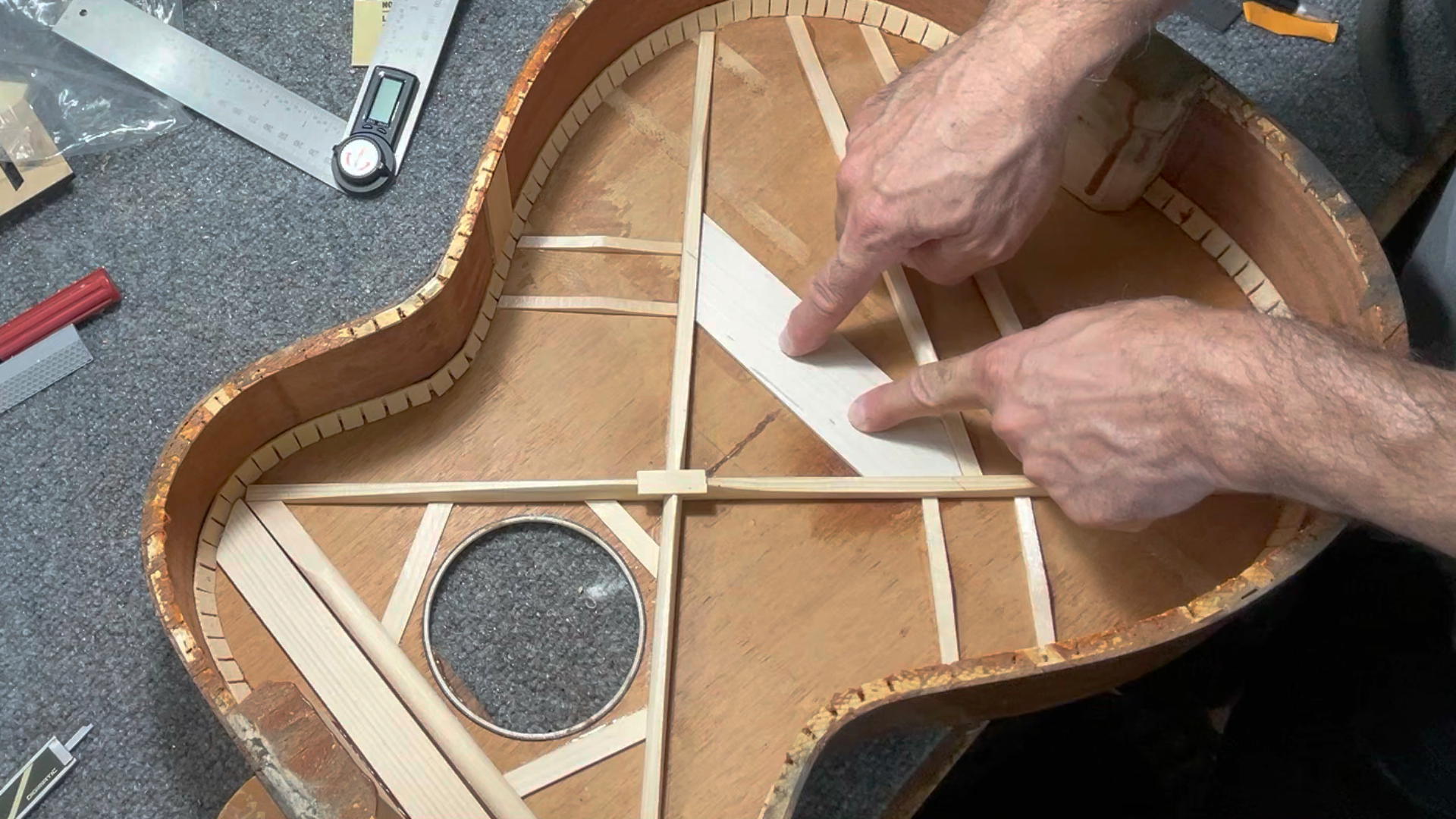
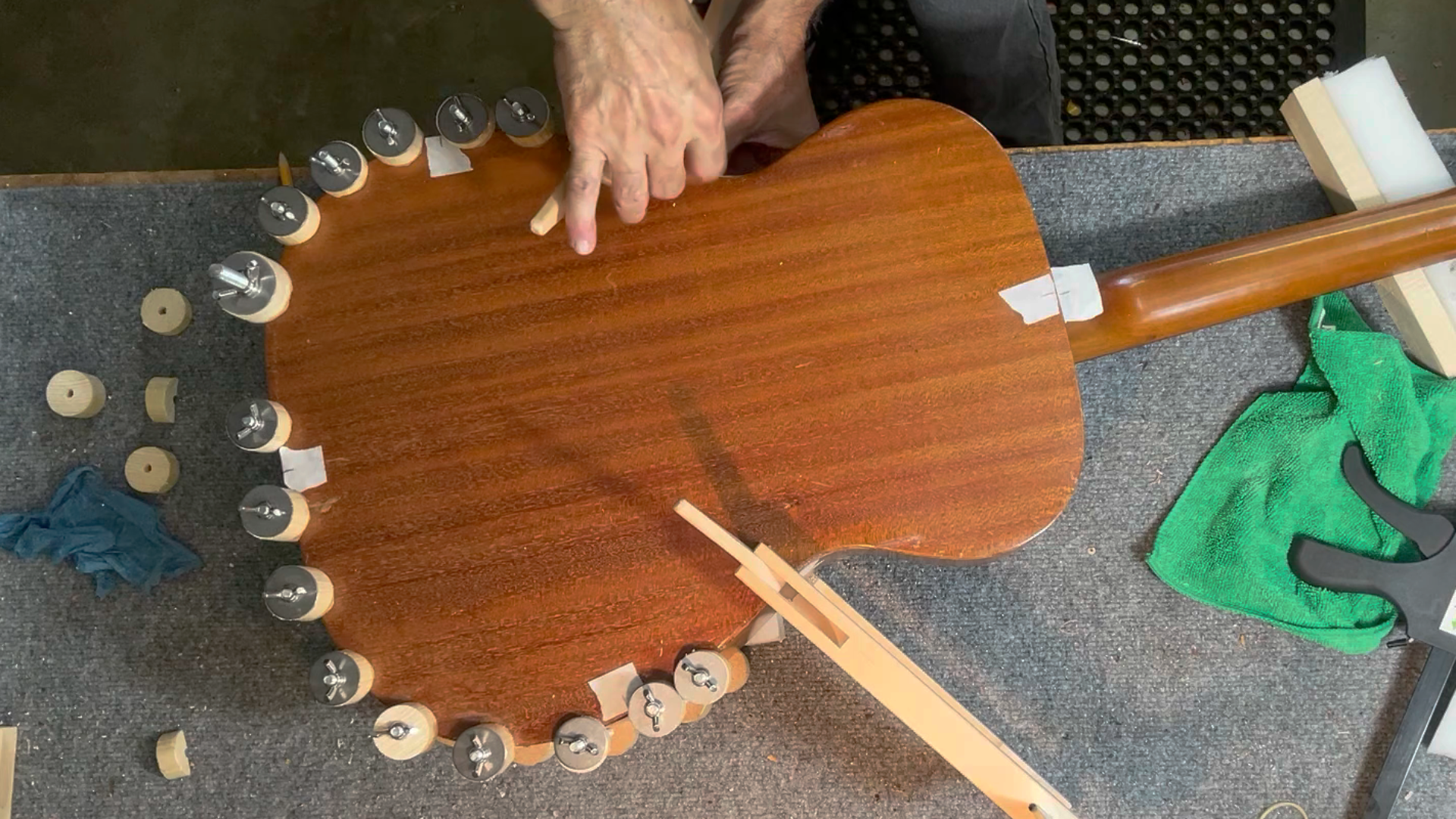
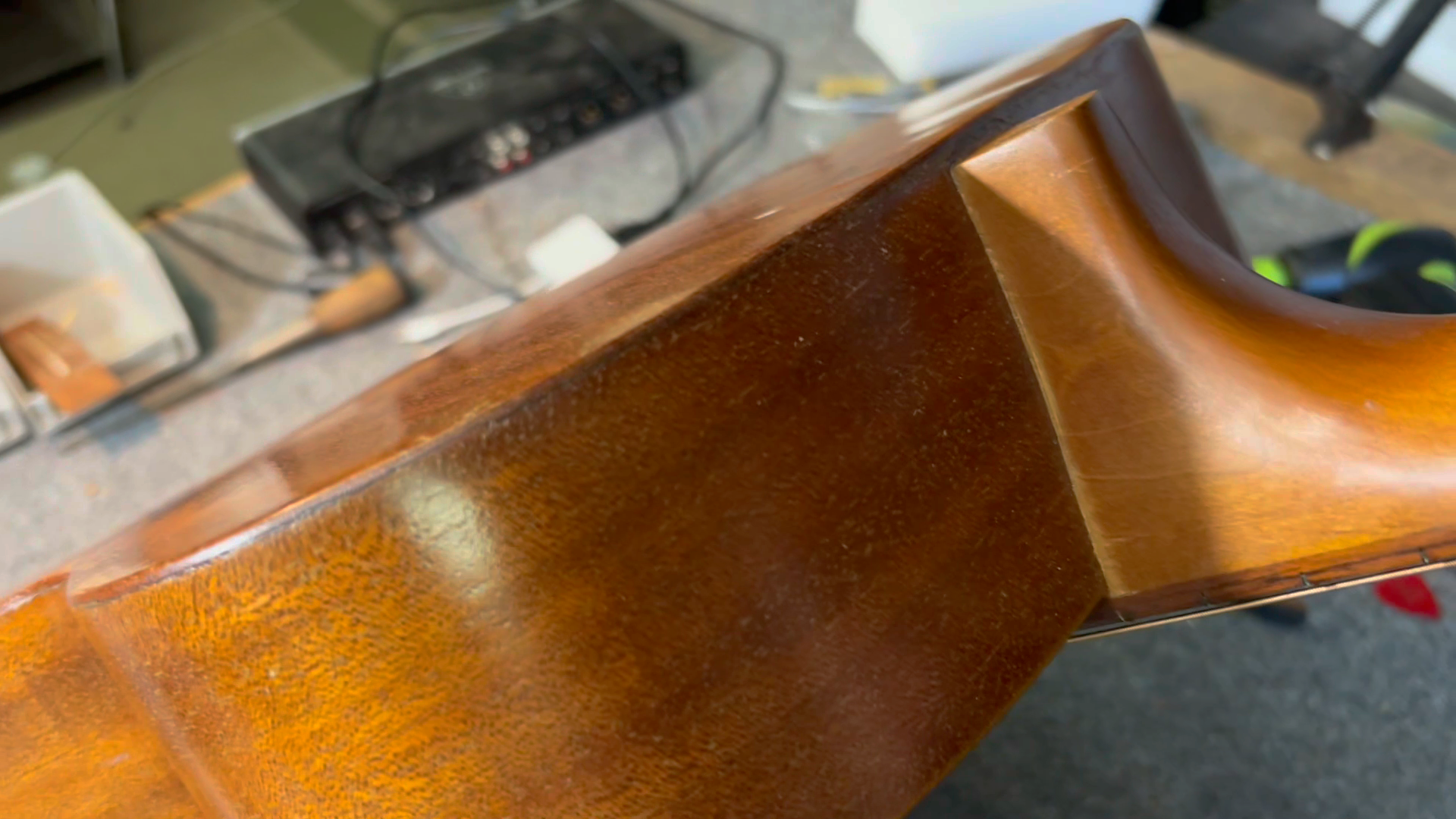
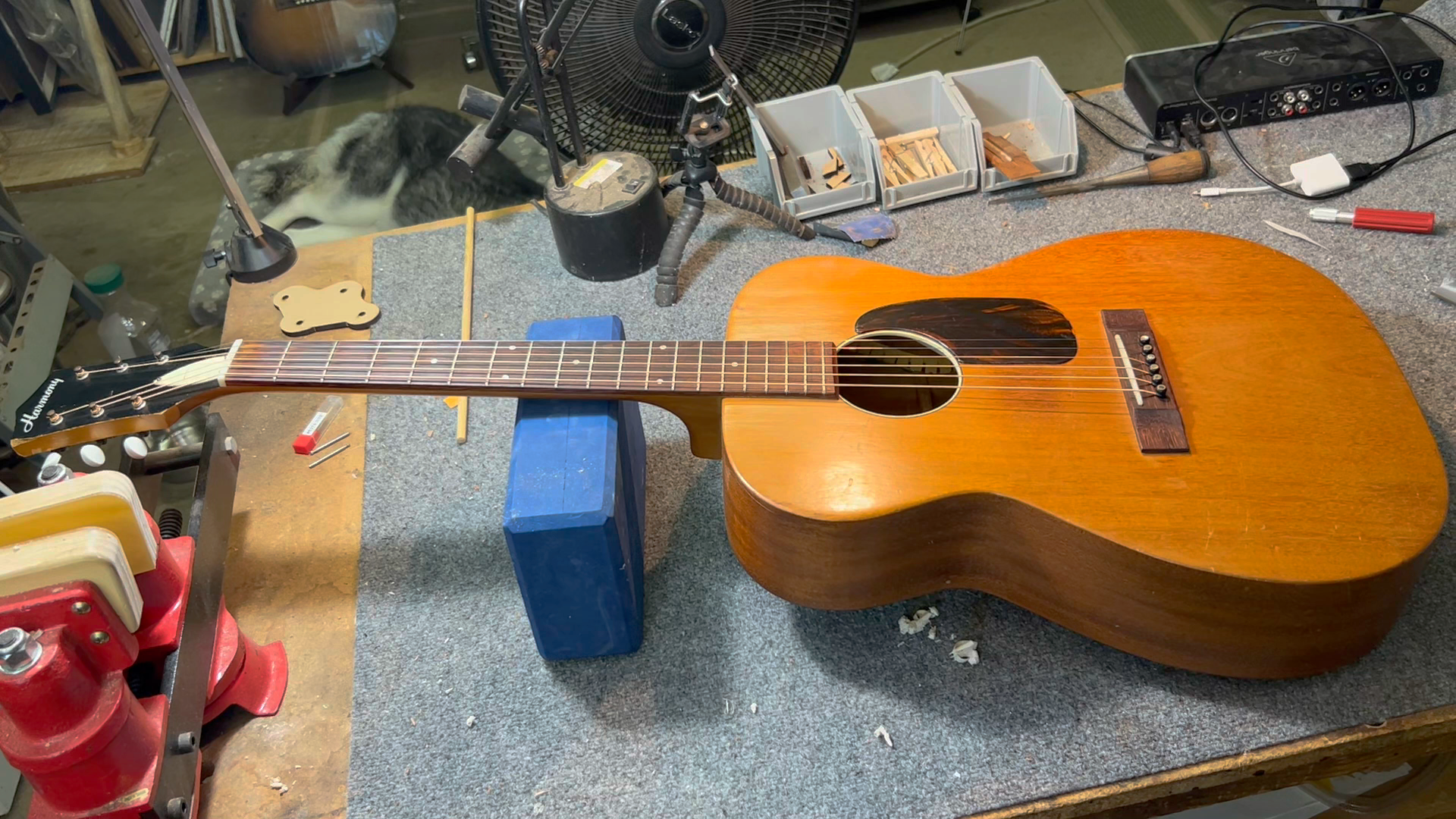
Hear The Comparison
Archtop Bridge Modification
Converting a standard adjustable bridge to a solid ebony bridge involves replacing the existing bridge mechanism with a piece of solid ebony that serves as both the bridge and saddle. Ebony is chosen for its dense and resonant qualities, which can enhance the guitar's tone and sustain. The process typically includes carefully removing the adjustable bridge, ensuring the new ebony bridge fits snugly and aligns correctly with the guitar's scale length and intonation points. This conversion aims to improve the instrument's sound quality by providing a more direct transfer of vibrations from the strings to the guitar's top, resulting in a clearer and potentially richer tone. It's a task that requires precision and woodworking skills to execute effectively without compromising the guitar's playability or structural integrity.

